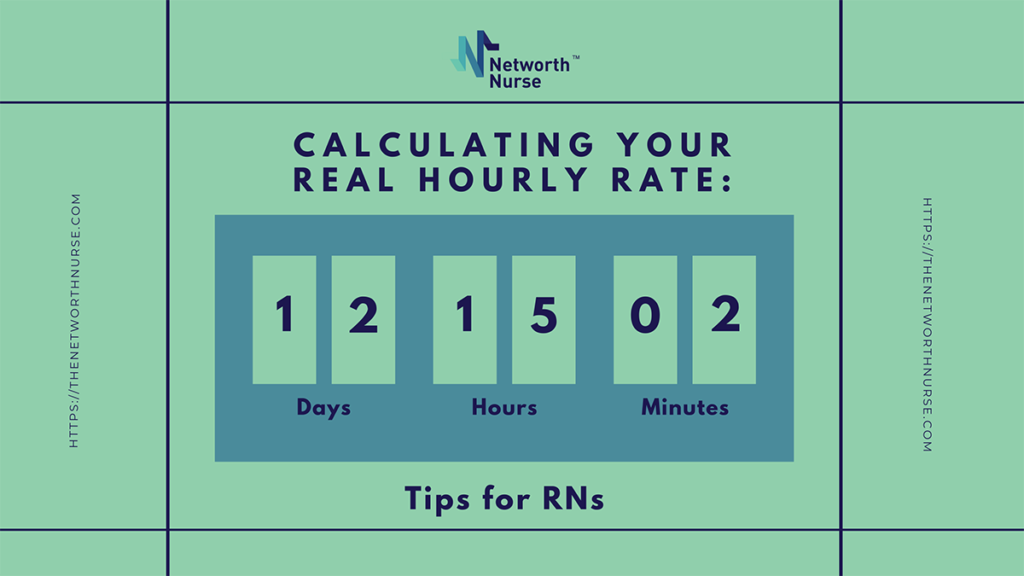Most nurses work at a base rate of dollars per hour, and however, it can be challenging to translate potential pay incentives into a real hourly rate. Here are some tips for RNs to determine a more accurate financial picture.
Shift Differential
Most RNs receive a shift differential on top of their base pay, especially when working in a hospital setting. Typically, these differentials cover night and weekend shifts. This number can be calculated by adding the differential to the base rate and multiplying it by the number of hours worked.
Charge, Preceptor, & Department Differential
Similarly to shift differential pay, nurses will earn extra dollars per hour for being the unit charge, precepting new employees, or working specialized departments. This rate can be calculated in the same manner.
Holiday Pay Differential
Holiday pay differential is typically offered to nurses working recognized holiday shifts. Most employers will pay one and a half times the base rate pay for these premium days. For a precise total, keep in mind that some facilities only use this premium pay during certain hours of the holiday.
Call-Back and On-Call Pay
Another common practice is paying an hourly rate for on-call shifts, where the nurse is readily available to come to work if needed. When called upon, they earn an additional premium hourly rate for hours worked. This is typically one and a half times the base pay.
Overtime Pay
An important factor to consider in your real hourly rate is overtime pay. The U.S. has instituted overtime requirements to protect employees under the Fair Labor Standards Act (FLSA). The U.S. Department of Labor (DOL) explains the 8/80 rule in more detail. Most facilities will pay one and a half times the nurse’s base pay for hours worked beyond an eight or twelve-hour shift, as well as any hours that exceed forty in one week.
Putting It All Together
To combine these factors into one example, let’s consider an RN who makes a base pay of $30 per hour. They work 12-hour shifts in the emergency department at 36 hours per week, with a department differential of $3.00 per hour. The facility pays overtime for any hours beyond twelve in a day and forty for the week. Their hours worked during one week include:
- Three scheduled shifts in the ER at 12 hours each, all on day shift (base pay plus department differential)
- One shift was on a Saturday
- One shift on the 4th of July, where 10 hours qualify for holiday pay
- One shift on-call for 4 hours and 8 hours worked as call-back
- One 12-hour shift where the RN was in charge
In this scenario, the RN earns:
- $33 per hour x 12 hours x 3 shifts = $1,188
- 12 hours weekend pay at $2.00/hr = $24
- 10 hours holiday pay at 1.5x base pay = $150 (base pay included in one of the 12-hour shifts)
- 4 on-call hours at $4.00/hr = $16
- 8 hours callback at 1.5x base pay = $360
- 12 hours charge differential at $4.00/hr = $48
- Overtime worked at 1.5x pay x 4 hours = $60 (36 scheduled hours, 8 hours call-back = 44 hours, 4 hours above 40. Base pay is calculated in 8 hours of callback above)
- Total for week earned = $1846 for 44 hours = $41.95/hour
As you can see, these additional factors significantly changed the RN’s real hourly rate from $30 to $41.95 per hour. According to the U.S. Bureau of Labor Statistics (BLS), the average annual RN income is $80,010. This equates to $42.74 per hour weekly, at 36 hours per week. When the various incentive pay scenarios are taken into account, this salary is consistent with a real hourly rate of approximately $42 per hour.
Other Important Factors
Deductions
When determining your actual take-home pay, don’t forget to factor in all payroll deductions. These can include federal and state taxes and social security or medicare deductions, as well as benefit expenses such as 401K contributions or health, life, and dental insurance. Here is a helpful tool to determine your pay profile with anticipated deductions.
Travel Nurse Considerations
Travel nurses are typically paid a taxable base rate, but also earn a tax-free housing and living stipend. These special considerations should be accounted for when determining your real hourly rate as a travel RN. For more details, check out this breakdown.
Understanding Your Real Hourly Rate
Nurses are in a unique position to earn money beyond their hired base rate of pay, but the different factors involved in the profession can make it challenging to calculate a true hourly rate. Using these tips, you will successfully clear up misconceptions and get a better sense of your actual income.





